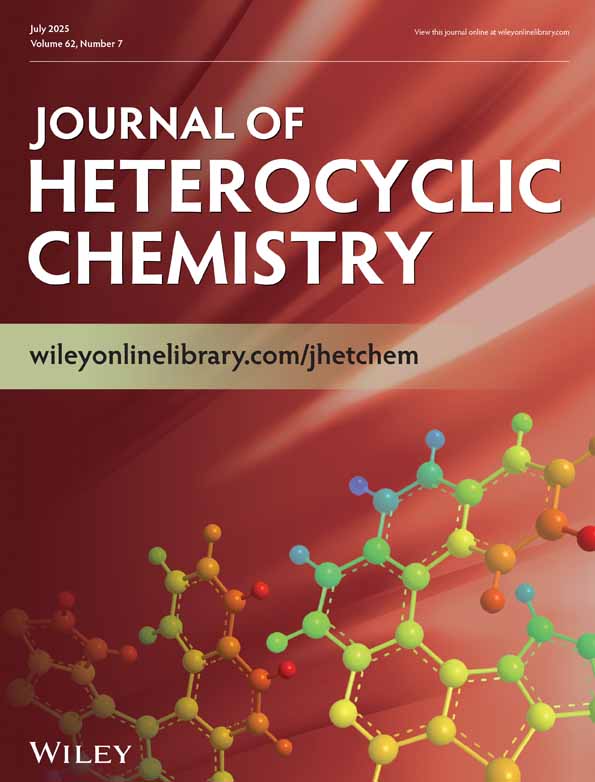On triazoles XXIV †. Synthesis of cycloalka[1,2,4]triazolo[1,5-a]pyrimidinones‡
For Part XXIII. see J. Reiter and K. Esses-Reiter, J. Heterocyclic Chem., 28, 561 (1991).
Presented on the 10th Symposium on the Chemistry of Heterocyclic Compounds, Košice (Czechoslovakia), 1990, see: Congress Abstracts Part II, p. 245.
Abstract
The uv and nmr spectral data of some 6,7,8,9,10,11-hexahydrocyclohepta[d][1,2,4]triazolo[1,5-a]pyrimidin-5-one, 5,6,7,8,9,11-hexahydrocyclohepta[e][1,2,4]triazolo[1,5-a]pyrimidin-10-one, 6,7,8,9,10,11-hexahydrocycloocta[d][1,2,4]triazolo[1,5-a]pyrimidin-5(12H)-one, 5,6,7,8,9,10-hexahydrocycloocta[e][1,2,4]triazolo[1,5-a]-pyrimidin-11(12H)-one, 6,7,8,9,10,11,12,13,14,15-decahydrocyclododeca[d][1,2,4]triazolo[1,5-a]pyrimidin-5(16H)-one and 5,6,7,8,9,10,11,12,13,14-decahydrocyclododeca[e][1,2,4]triazolo[1,5-a]pyrimidin-15(16H)-one as well as their N-benzylated derivatives representing six novel ring systems were compared to prove their structure. The N-benzylation of the highly insoluble cyclic amides to yield the isomeric N-benzyl derivatives 3/1, 3/2 and 3/3 distinguished by INAPT was performed through their readily soluble tetrabutylammonium salts.




